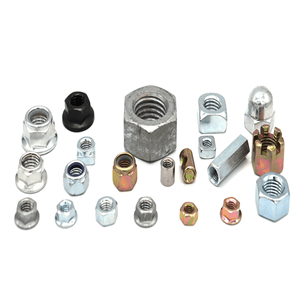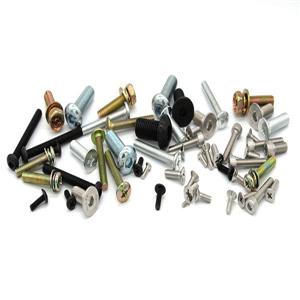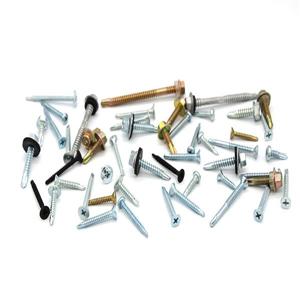Analysis of common anti-loosening methods and locking structure of lock nuts
1) The life cycle of self-locking nuts:
From the point of view of the principle of self-locking nuts, in order to ensure the function of the threaded connection and the rotatability, it is required to maintain a certain gap between the threaded mating surfaces. According to the research on the structural loosening mode, the relative vibration between the threads under dynamic load conditions will reduce the friction coefficient of the thread pair, and cause the nut to rotate or even loosen. Among the aviation components, the threaded connection line is an important component, and the thread is anti-loosening. The design of the product is of great significance to the product.
Common anti-loosening methods include:
First, the anti-loosening mode that destroys the movement relationship of the screw pair mainly uses welding or filling to cause local deformation of the screw thread of the nut and bolt to achieve the effect of anti-loosening of the thread.
Second, mechanical relaxation means that additional locking elements can be used after the nut is tightened to prevent relative rotation of the nut and bolt. Commonly used cotter pins, stop washers, etc., can increase the weight of the thread pair and the difficulty of disassembly.
Third, the frictional anti-loosening effect is mainly achieved by increasing the frictional force of the contact surface to achieve the anti-loosening effect of the nut. For self-locking nuts, radial deformation can be achieved through the locking area of the nut to achieve the anti-loosening effect. When the bolt is screwed into the closed deformation position of the self-locking nut, the closed deformation position of the nut will form a radial compression force on the bolt , So that the thread forms static friction, and the thread surface has an anti-loosening moment. There is no need to use other auxiliary locking components to make the nut anti-loosening. It is also an important anti-loosening measure for components in the aviation field, but with the use of self-locking nuts, the self-locking torque will be attenuated.
Combined with the existing research, the self-locking nut will be close to the limit value of the self-locking torque after 15 repeated experiments. During the use process, due to the thread pair locking area, equipment status, processing quality and other problems, the products it produces cannot To reach the expected life, effective measures must be taken to reduce the attenuation of the locking torque during the use of the self-locking nut to increase its service life.
2) Analysis of influencing factors of torque attenuation of self-locking nuts
2.1 Material selection and heat treatment method
Combining the design conditions of the engine assembly position, for the fasteners in the aviation field, you can choose stainless steel, structural steel or titanium alloys and other materials for the fastener materials, and the selection gradually shows the trend of high strength and high temperature resistance. Some high-temperature alloy materials are widely used in the design of engine self-locking nuts. Reasonable selection of materials is the key to ensuring product quality. The service life of the self-locking nut and the existing experimental research have proved that the material and heat treatment method of the nut will affect the torque attenuation of the self-locking nut. At the same time, it is necessary to pay attention to the material, hardness and coating matching of the thread.
2.2 Locking structure
Choosing the right material and controlling the heat treatment method has a significant impact on the locking system of the lifting nut, but since the self-locking nut mainly relies on friction for anti-loosening, the anti-loosing structure and size are threaded connections during the stress process. The effect of the movement on the loosening of the thread is relatively obvious, so the service cycle of the self-locking nut will be affected by the characteristics of the nut locking structure and the deformation of the locking area. First, the typical locking structure. Currently, the self-locking nut locking structure commonly used in the aviation field is an elliptical flattened structure, a non-metallic insert structure and a slotted and closed structure. Non-metallic inserts use the elastic properties of non-metallic materials to realize the anti-loosening effect of the film, and the rest adopt the self-locking effect of the closing deformation of the locking area to realize the anti-loosing effect.
Through the actual use of the self-locking nut in the engine, it is found that the use effect and repeated use stability of the self-locking nut in different locking areas will be greatly different. The finite element software is used to lock the different thread pairs. The simulation analysis was realized, and it was found that the force deformation of the ligand in the thread pair would affect the contact area and force uniformity of the locking zone, and it was directly related to the stability of the locking performance.
All in all, the current self-locking nut is an important anti-loosening product, and its self-locking performance stability will affect the connection performance of the product. In this study, by analyzing the life cycle of self-locking nuts, it is stated that optimizing and improving the self-locking nut cycle is the goal. After optimization through experiments, the locking performance of self-locking nuts has been significantly improved, which further shows that this method is useful for improving the maintenance of fasteners. Sexual reliability is of great significance.




